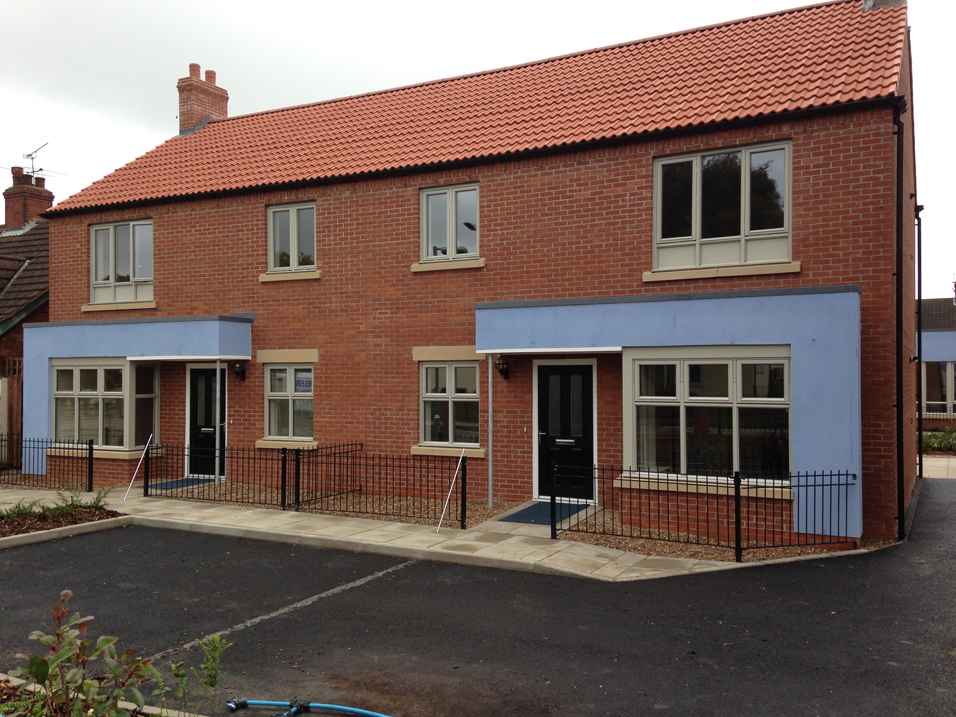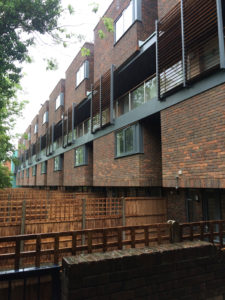
 While there may be no silver bullet for all of housing woes, Stuart Cameron at Morgan Tucker considers what constitutes good quality housing and how two factors — the Lifetime Homes Standard and technology, may have some of the answers.
While there may be no silver bullet for all of housing woes, Stuart Cameron at Morgan Tucker considers what constitutes good quality housing and how two factors — the Lifetime Homes Standard and technology, may have some of the answers.
House prices are rising, our population is ageing and there is a shortage of suitable family homes available on the market. The facts and figures are nothing new and the housing supply debate has been raging for decades but how do we tackle this growing issue? The situation is complex and with the new Housing and Planning Act, the topic continues to gain traction in the national newspapers — maintaining a voice on this incredibly important issue.
There are many themes at play — from the Government calling for more people to own their own homes and yet, a large proportion of the population are unable to access funding for a mortgage. There is clearly a need for new housing as well as a social housing policy but this forgets one crucial element — our ageing population.
We have known for some time that our population is growing and ageing with an estimated 64.6 million people residing in the UK in 2014, according to the Office of National Statistics. At this point, 17.7% of our total population were over the age of 65 and this figure is expected to continue to rise, to almost a quarter (24.3%) by 2039. Understanding this is key to meeting our future housing requirements just as their future design must be considered in order to cater for these changing demographics.
The Lifetime Homes Standard has this philosophy at its core. The standards were developed in the 1990s and are based upon 16 core criteria which help to make a property easily adaptable to the changing needs of a family, over time. The values are as true today as ever and bodies such as The Lifetime Homes Foundation have been created with this single goal in mind — to promote and provide resource to organisations looking to support the programme.
For too long, there has been a mentality of pigeon holing the population into sub sections of society and then developing properties in line with this. Starter homes are the perfect example, intended for those just entering into the housing market and predominately the younger generation. These properties often have great incentives for the first-time buyer and yet, families or the retired can potentially be excluded. The point is the diversity of our societies’ needs and the importance of each and every home being built to cater for these requirements.
The Lifetime Homes Standard is a case in point, like the Building for Life programme, it considers a number of core factors from parking facilities through to communal spaces, bathrooms, sockets and the use of controls to enable greater accessibility and inclusivity of design.
 In order for success, Lifetime Homes and other schemes were designed to aid the development of properties and fundamentally link a series of key components — the idea of homes for life, that cater for our needs whatever they may be. We are certainly not naïve in thinking that Lifetime Homes is the remedy for all our housing woes but it does tick a lot of boxes. Offering a more inclusive design strategy for our housing stock can be cost effective and can meet the needs of the young and old alike.
In order for success, Lifetime Homes and other schemes were designed to aid the development of properties and fundamentally link a series of key components — the idea of homes for life, that cater for our needs whatever they may be. We are certainly not naïve in thinking that Lifetime Homes is the remedy for all our housing woes but it does tick a lot of boxes. Offering a more inclusive design strategy for our housing stock can be cost effective and can meet the needs of the young and old alike.
In the recent Happi 3 report, another interesting point is raised around the need for more housing specifically designed to meet the needs of an ageing population. Where these properties differ is through increased accessibility and for the provision of health support services. Most importantly, the report and the wider findings of the Parliamentary Group have led to the development of a full implementation plan, considering the roles and responsibilities of key government departments, as well as local planning authorities in implementing the plan, over the longer term. In fact, Richard Best, the chair of the All Parliamentary Group on Housing and Care for Older People, stated that ‘meeting the needs of an ageing population, could achieve the double benefit of helping the younger generation as well’ through the release of family homes onto the market.
How can MT help?
What legislation and standards have shown, is that Lifetime Homes provide a perfect stepping stone for the market, ensuring suitability of premises across a broad spectrum of the UK’s population. And yet, this cannot be the sole strategy. The Happi 3 report outlines the role that better designed retirement properties can bring and how this in turn can free up family homes for future generations. We cannot be naïve in believing that there is one single solution to solve the current housing issues, but we do know that design is key. From technology to layout, right through to efficiencies and accessibility — there is a huge task ahead, but we are beginning to see some changes and the housing for ageing population is very much one of them.
Reflecting the need for independent living accommodation, built with older people in mind, Morgan Tucker has been developing a series of projects over the last few years, with this in mind. At the heart of its technical design service, Morgan Tucker understands that the journey into independent living can be a tough decision to make for many individuals and therefore designs need to be reflective of their changing needs.
From general housing needs through to housing estate regeneration and assisted living, including some dementia care provision, it is crucial that we look more closely at the needs and wants of our changing demographic and build homes that are reflective of these markets. What a wonderful legacy it would be, to develop a housing policy that meets the needs of the UK population now and in the future — properties that are able to adapt to our needs, whatever they be.








